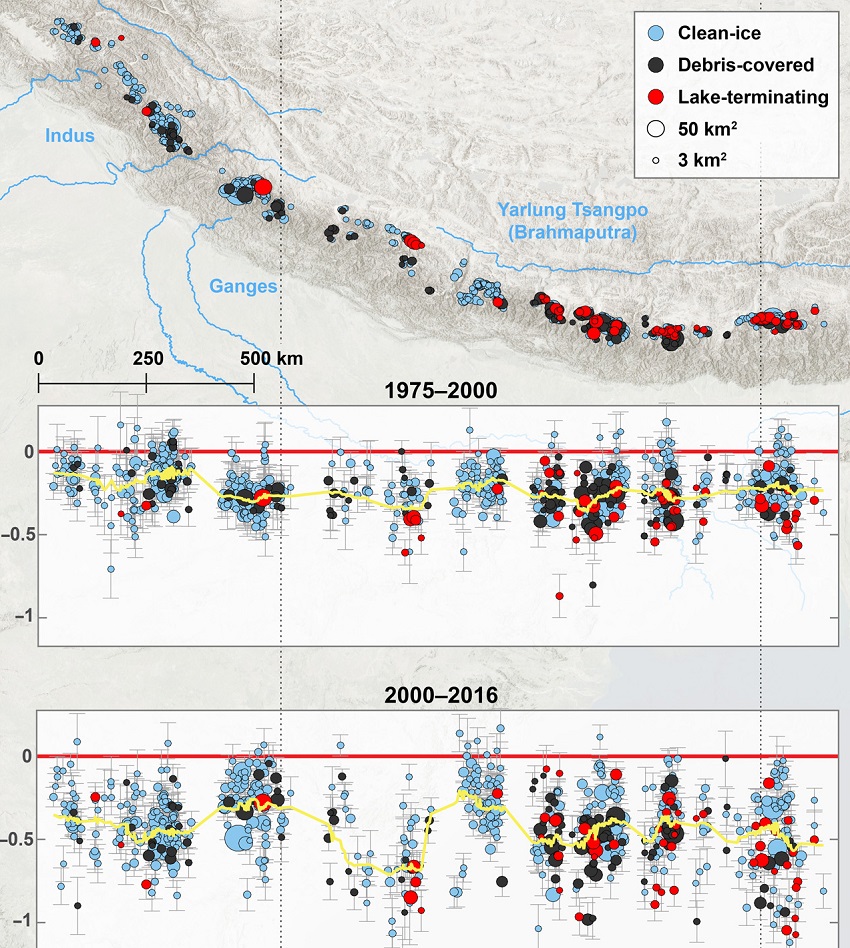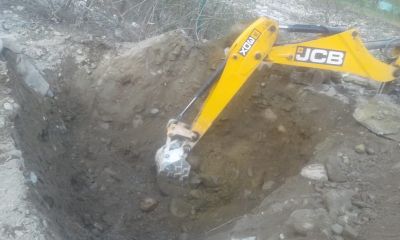Devastating news for the people living in Himalayan region as study reveals that the Himalayan glaciers are melting rapidly and has doubled since the turn of the century, with more than a quarter of all ice lost over the last four decades.
The accelerating losses indicate a “devastating” future for the region, upon which a billion people depend for regular water.
Researchers from Columbia University claimed that the glaciers have lost more than a quarter of their ice in the last 4 decades. They sifted through declassified US spy satellite images from the mid-1970s and took help of modern satellite data and looked at 650 glaciers and four-decade record of ice along the 2,000km (1,200-mile) mountain chain.
The study, which is published in Science Advances journal claims, the Himalayas lose an average of 4bn tonne ice from 1975- 2000. But after 2000 the glaciers started melting twice as fast losing about 8bn tonne, every year (2000-2016). 8bn tonne ice is enough to fill 3.2 million Olympic-sized swimming pools per year. Lower level glaciers have been shrinking 5 m in height annually since 2000. Report says
“we quantify changes in ice thickness during the intervals 1975–2000 and 2000–2016 across the Himalayas, using a set of digital elevation models derived from cold war–era spy satellite film and modern stereo satellite imagery. We observe consistent ice loss along the entire 2000-km transect for both intervals and find a doubling of the average loss rate during 2000–2016 [−0.43 ± 0.14 m w.e. year−1 (meters of water equivalent per year)] compared to 1975–2000 (−0.22 ± 0.13 m w.e. year−1). The similar magnitude and acceleration of ice loss across the Himalayas suggests a regionally coherent climate forcing, consistent with atmospheric warming and associated energy fluxes as the dominant drivers of glacier change”
Report claimed that at least a third of the ice in the Hindu Kush-Himalaya ranges was already doomed to melt by the end of the century, even if drastic action to cut emissions was taken immediately. Without action, two-thirds would go.
Researchers claim Global heating caused by human activities as the main reason behind this drastic melting of Himalayan glaciers. The glaciers are shrinking at similar rates all along the mountain chain, indicating a common cause.
Temperature data from the region also shows an average rise of 1C from 2000-16 compared with 1975-2000. Calculations show this rise is consistent with the amount of ice being lost.
Melting of glaciers will affect great rivers that flow through China, Nepal, Bhutan, India, Pakistan, and Bangladesh. Which in turn will have a serious impact for billions depending on these rivers in recent future.
To stop this temperature rise and to cool the planet, slowing down greenhouse gas emissions won’t be enough, but we will have to reverse them and that is going to be the greatest challenge for the human race in the coming years.






